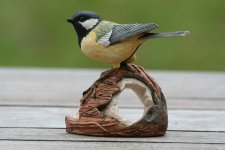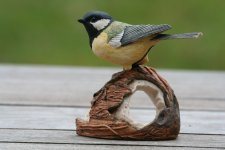senatore
Well-known member
Only very recently got a Canon 350D and Sigma 170-500 lens and my initial observations on using them are:-
* You need to learn a new language to understand how to use them eg. mirror lock,noise reduction,predictive AF and lens creep (this last one could be wrong as it sounds more like a disease that effects men)
* Taking good pics is not the only skill you have to learn you also have to master the mysterious world of photo editing.
* As I was warned on BF even with a 500 lens you have to get within an arms lentgth of a small bird to get a good pic.
* Birds will move off the moment you,ve got them in your viewfinder.
* Handhoding a 500 lens steady is impossible for humans.Anyone that achieves this is an alien.This is the main alien identification test done by MI 5.
* Anyone that gets a sharp and detailed pic of a bird is using a camera and lens costing at least £10,000.
*You need bright conditions to get a decent pic but the moment you receive your camera/lens from the dealer the weather will be dull for day after day.
* According to everyone you meet after you have bought your camera and lens you have missed a better deal elsewhere or even worse you've bought the wrong kit.
Have I missed anything?I am sure I have because what do I know about this fascinating world of DSLR photography.
Max.
* You need to learn a new language to understand how to use them eg. mirror lock,noise reduction,predictive AF and lens creep (this last one could be wrong as it sounds more like a disease that effects men)
* Taking good pics is not the only skill you have to learn you also have to master the mysterious world of photo editing.
* As I was warned on BF even with a 500 lens you have to get within an arms lentgth of a small bird to get a good pic.
* Birds will move off the moment you,ve got them in your viewfinder.
* Handhoding a 500 lens steady is impossible for humans.Anyone that achieves this is an alien.This is the main alien identification test done by MI 5.
* Anyone that gets a sharp and detailed pic of a bird is using a camera and lens costing at least £10,000.
*You need bright conditions to get a decent pic but the moment you receive your camera/lens from the dealer the weather will be dull for day after day.
* According to everyone you meet after you have bought your camera and lens you have missed a better deal elsewhere or even worse you've bought the wrong kit.
Have I missed anything?I am sure I have because what do I know about this fascinating world of DSLR photography.
Max.






